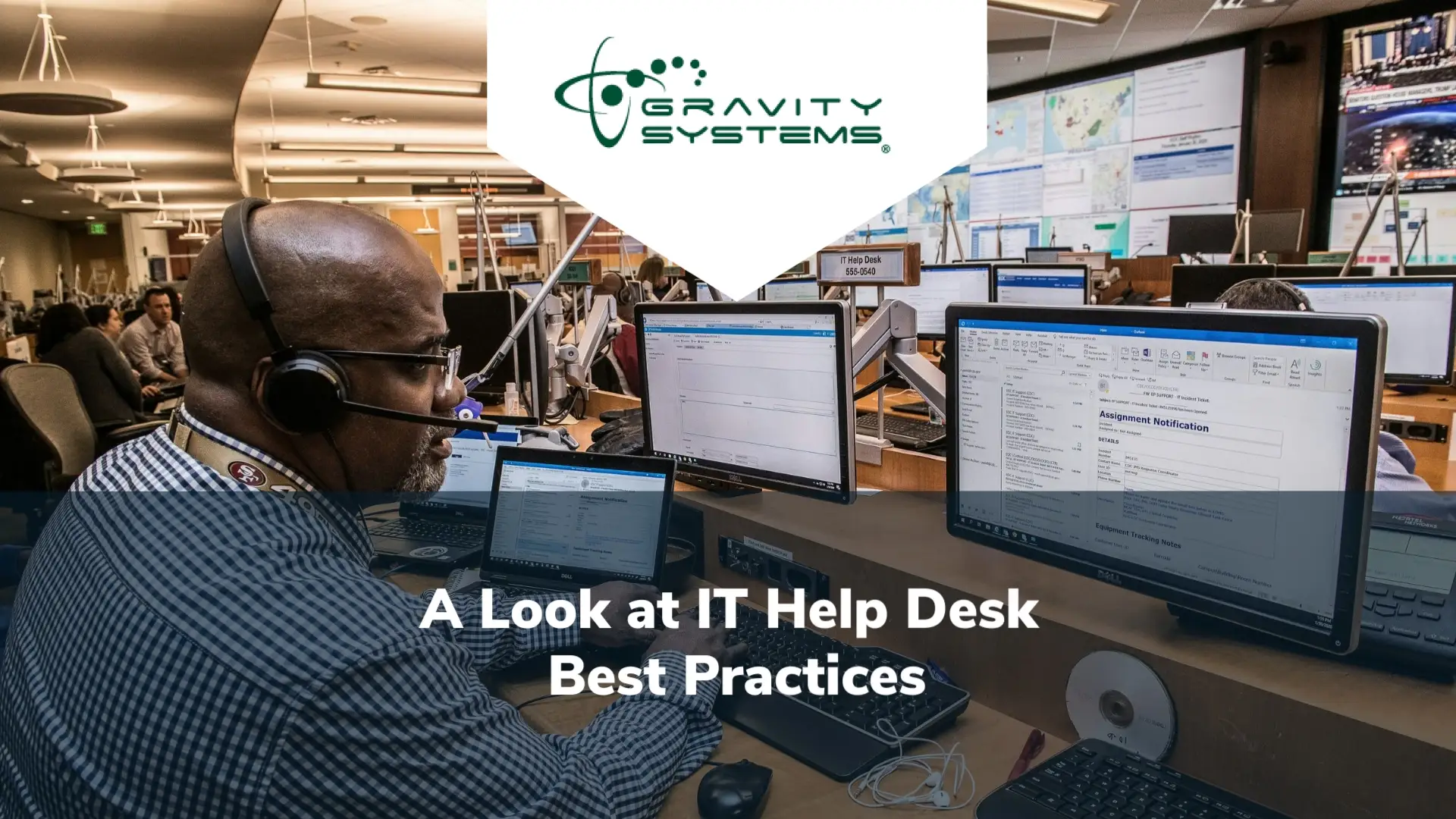The Complete Guide to IT Help Desk Best Practices for Improved Support
Managing an IT help desk is no small feat. The endless stream of service requests, from password resets to more complex hardware or software issues, can overwhelm even the most seasoned support team.
Without effective strategies in place, your team members can quickly become swamped, leading to delayed response times and, ultimately, a decline in customer satisfaction.
In fact, a survey revealed that only 24% of respondents believe that existing IT service management best practices have kept up with the changing landscapes of IT and business.
|
As Kent Morris, President of Gravity Systems, says, “Implementing IT help desk best practices is crucial for streamlining operations, improving efficiency, and enhancing customer experience.” |
This guide outlines essential practices to elevate your IT help desk's performance and ensure your team can handle every challenge with ease.
IT Help Desk Best Practices: 10 Essential Tips for Success
1. Prioritize and Categorize Tickets Effectively
One of the foundational IT help desk best practices involves prioritizing and categorizing desk tickets. By establishing clear categories for service requests, desk teams can quickly identify the nature of issues and prioritize them based on urgency and impact.
This not only speeds up the resolution process but also ensures that critical issues receive immediate attention, enhancing customer satisfaction.
Is Slow IT Helpdesk Support Slowing You Down?
Experience rapid resolution with Gravity Systems' fast-response IT helpdesk.
Accelerate Your Processes with Expert IT Helpdesk in Austin
2. Implement a Knowledge Base
A comprehensive knowledge base is invaluable. It empowers customers to find solutions to common problems without needing to contact customer support, reducing the workload on your team.
Additionally, a well-maintained knowledge base serves as a resource for staff members to quickly find information, streamlining the resolution process.
3. Use Service Desk Software
Investing in quality service desk software is crucial.
These systems enable efficient management of support tickets, automate workflows, and facilitate communication between team members and customers. Service desk software also provides valuable data analytics, helping you identify trends and areas for improvement.
4. Train Your Team Continuously
The skills and knowledge of your team members are your most valuable assets.
Investing in continuous training ensures that your staff is up-to-date with the latest technologies and best practices. This not only improves their ability to resolve issues efficiently but also boosts team morale and job satisfaction.
5. Encourage Team Collaboration
Encouraging collaboration among team members can lead to more innovative solutions to complex problems. Establishing a culture where staff members feel comfortable sharing knowledge and insights can significantly enhance the overall effectiveness of your support team.
6. Regularly Review and Improve Processes
Continuous improvement is key to maintaining an efficient IT help desk. Regularly reviewing processes, analyzing performance data, and soliciting feedback from both customers and team members can reveal opportunities for improvement.
Implementing changes based on this feedback ensures your service remains responsive and effective.
7. Personalize the Customer Support Experience
Personalizing customer support interactions can greatly enhance customer satisfaction. Bain & Company analysis shows that companies that excel in the customer experience grow their revenues by 4% to 8% compared to their competitors.
By remembering previous interactions and preferences, your team can provide a more tailored and efficient service. This attention to detail can turn a frustrating experience into a positive one for the customer.
8. Utilize Ticketing Systems Effectively
Effective use of ticketing systems is vital. These systems help organize, track, and manage service requests, ensuring nothing falls through the cracks. They also provide valuable data for analyzing trends and performance, aiding in continuous improvement efforts.
|
More resources you might like: |
9. Focus on Customer Satisfaction
Ultimately, the goal of any IT help desk is to resolve the issue at hand and ensure customer satisfaction.
Regularly measuring customer satisfaction and making it a key metric for evaluating the success of your support team encourages a customer-centric approach, leading to better service and happier customers.
Elevate Your Help Desk Operations With Gravity Systems

Navigating the complexities of IT help desk management demands a strategic approach. By implementing these best practices, organizations can significantly improve their support operations, resolve issues swiftly, and ensure customer satisfaction. However, achieving this level of service can be challenging without expert support.
Gravity Systems excels in transforming IT help desks into efficient, customer-centric operations. Our expertise in deploying the right mix of technology, processes, and people ensures your IT support is not just functional but exceptional.
|
Explore our range of IT services in Austin: |
For businesses looking to elevate their IT help desk operations, Gravity Systems offers the expertise and support needed to make a difference.
Contact us today to schedule a free consultation and take the first step towards transforming your IT help desk into a model of efficiency and customer satisfaction.







